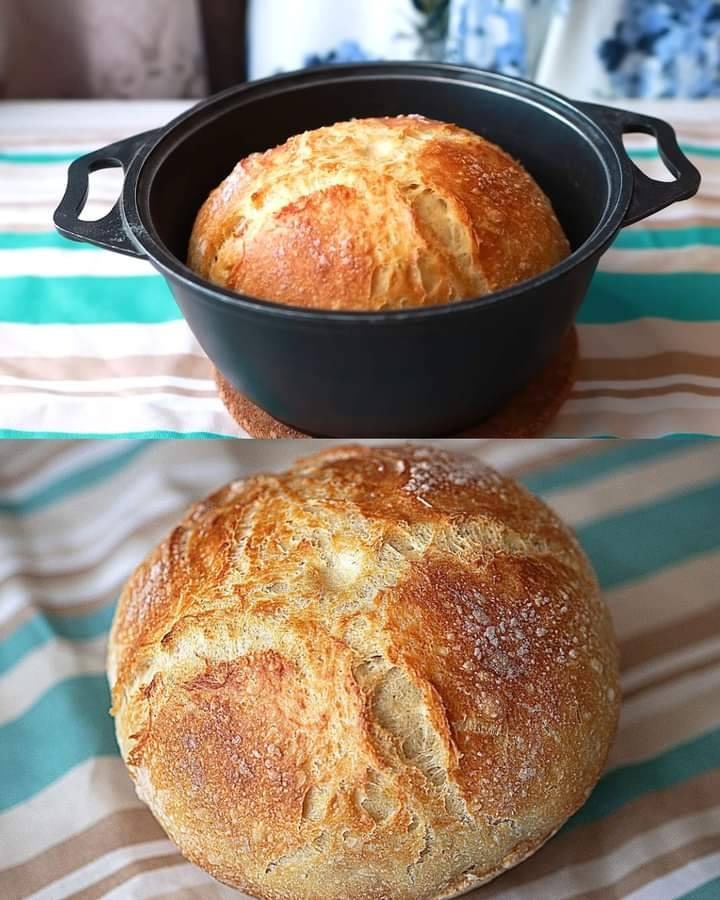ADVERTISEMENT
– Shape the dough into a loaf or your preferred form (e.g., round boule or baguette).
Second Rise:
– Place the shaped dough on a baking sheet lined with parchment paper or in a greased loaf pan.
– Cover loosely with a cloth or plastic wrap.
– Allow the dough to rise for an additional 20-30 minutes as you preheat the oven.
Preheat the Oven:
– Preheat the oven to 220°C (425°F).
Prepare for Baking:
– Optionally, dust the top of the loaf with flour for a rustic look or brush with water for a crispier crust.
– Use a sharp knife or bread lame to make a few diagonal slashes on the top of the dough. This allows steam to escape during baking.
Bake the Bread:
– Place the bread in the preheated oven on the middle rack.
– Bake for 25-30 minutes, or until the crust is golden brown.
– To test for doneness, tap the bottom of the loaf; it should sound hollow.
Cool the Bread:
– Remove the bread from the oven and transfer it to a wire cooling rack.
– Allow it to cool for at least 15 minutes before slicing to avoid a gummy texture.
Serve and Enjoy:
– Slice the bread with a serrated knife.
– Enjoy it plain, with butter, or use it for sandwiches and toast.
Additional Tips:
– Water Temperature: Ensure the water is warm to the touch, ideally around 110°F (43°C). Hot water may kill the yeast, and cold water won’t activate it properly.
– Yeast Activation: If the yeast mixture doesn’t become frothy after 5-10 minutes, it may be inactive. Start over with fresh yeast to ensure proper rising.
– Rising Environment: For optimal rising, place the dough in a warm, draft-free area. If your kitchen is cool, preheat your oven to its lowest setting for a few minutes, then turn it off and let the covered dough rise inside.
– Storage: Store leftover bread in a paper bag at room temperature for up to 2 days. For longer storage, wrap tightly in plastic wrap and freeze for up to 3 months.
– Variations: You can add herbs, seeds, or cheeses to the dough during the initial mixing stage for added flavor.
ADVERTISEMENT
